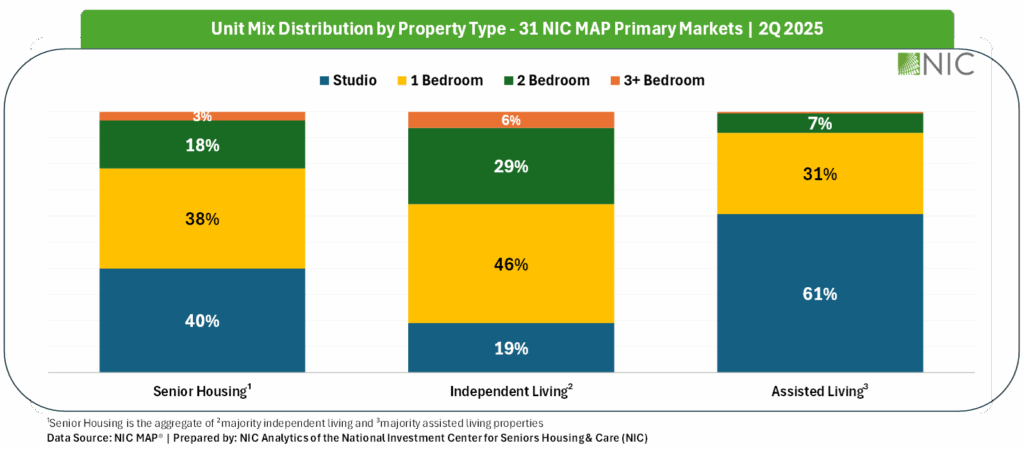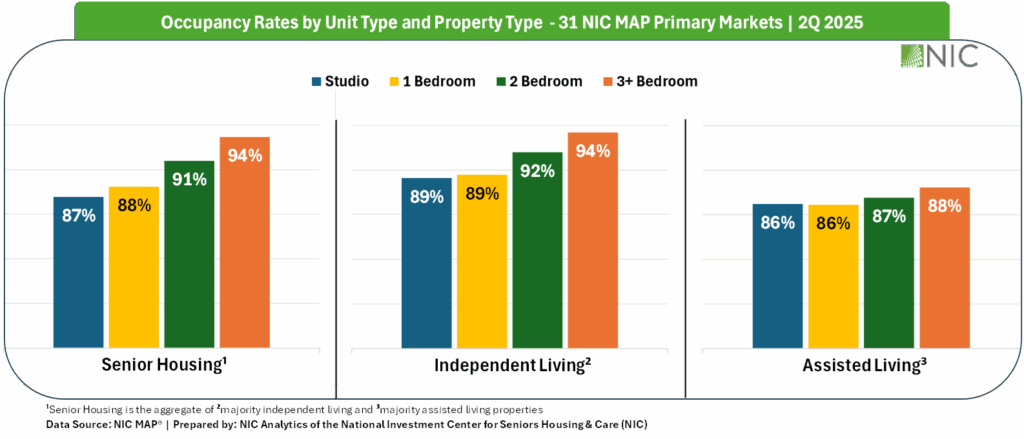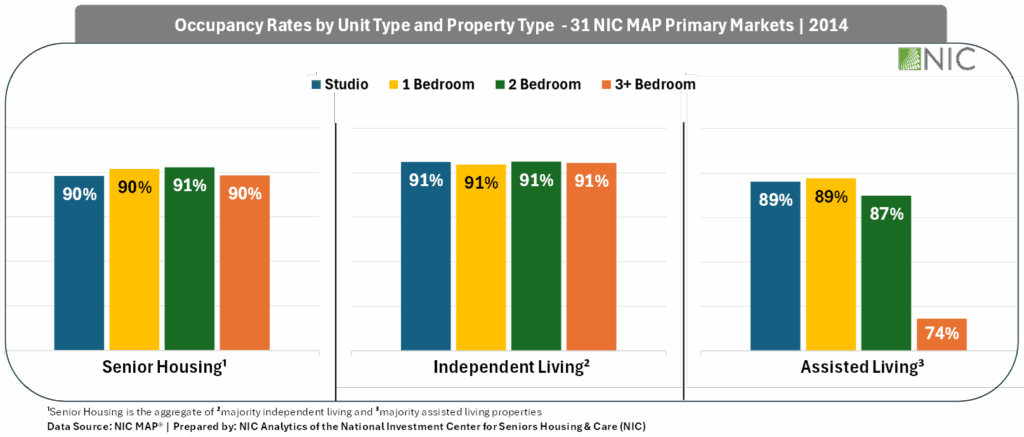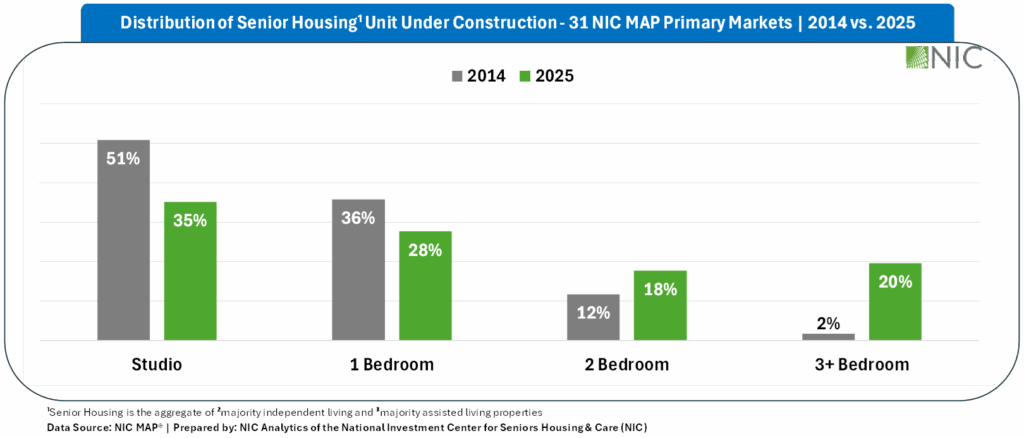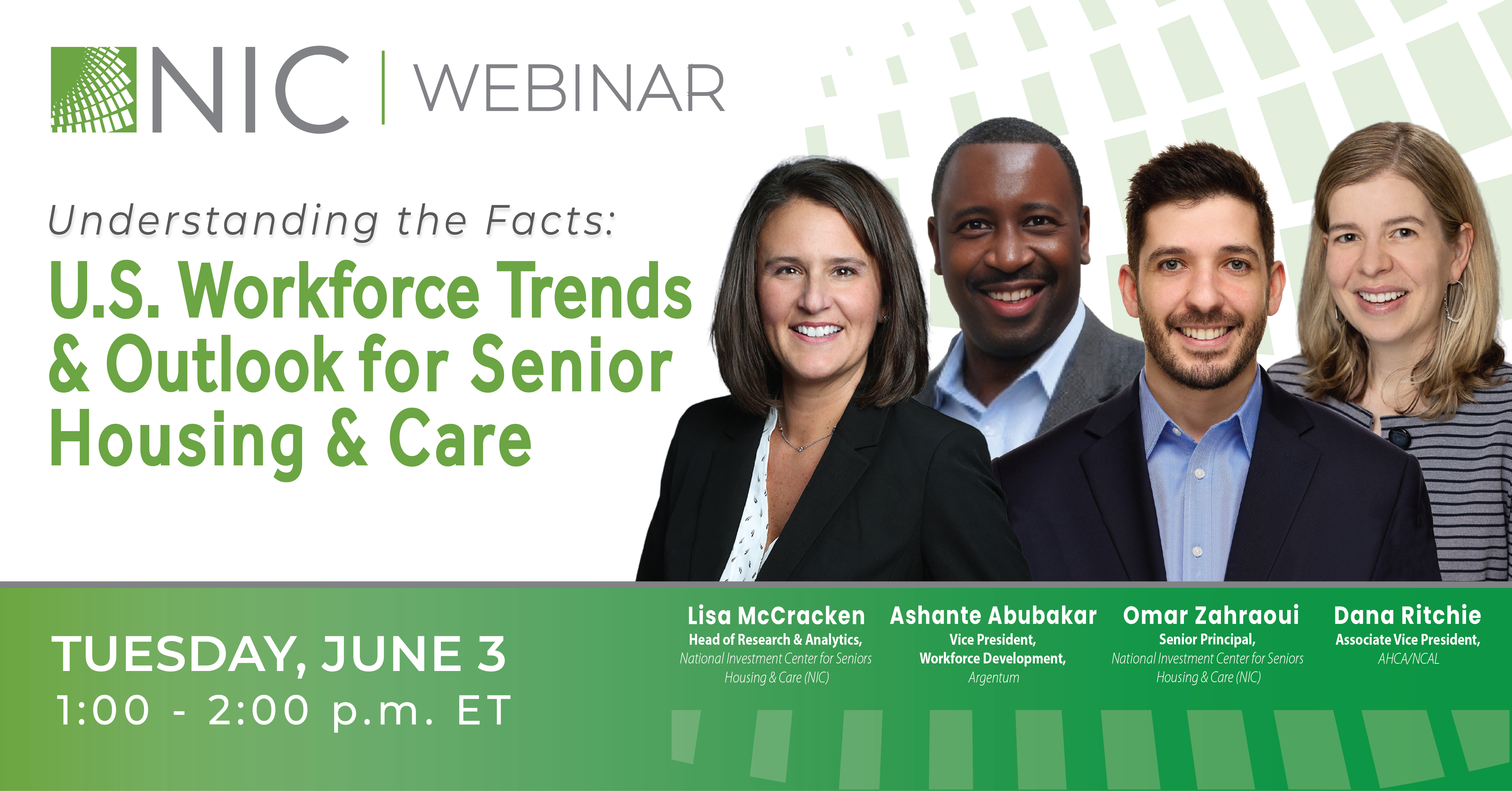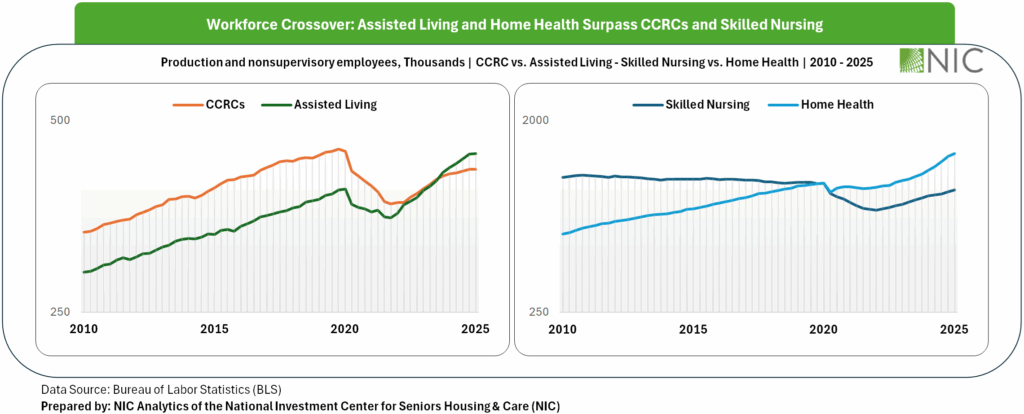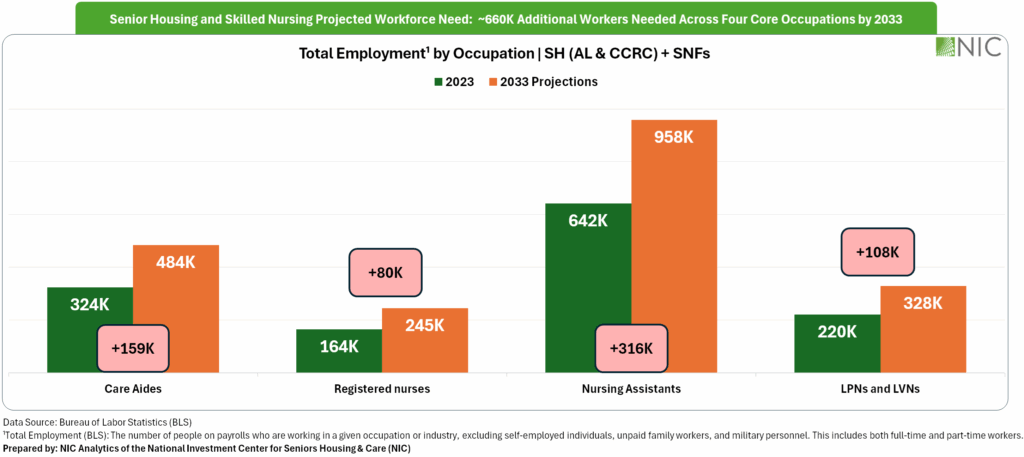The following analysis examines the broader occupancy trends, year-over-year changes in inventory, and same-store asking rent growth – by care segment – within 1,054 entrance fee and rental CCRCs in the 99 NIC MAP Primary and Secondary Markets.
2Q 2025 Unit Type Distribution in Entrance Fee vs. Rental CCRCs
The exhibit below explores the distribution of unit type across entrance fee and rental CCRCs, revealing a greater prevalence of independent living units in entrance fee CCRCs.

In Entrance Fee CCRCs, the data showed that independent living units represent 65.7% of the total inventory in the second quarter of 2025 – the largest share across all care segments and payment types. This was followed by nursing care (18.1%), assisted living (12.2%), and memory care (3.9%).
Entrance fee CCRCs typically attract residents who plan ahead for long-term needs, often moving in and choosing independent living as their initial option while still relatively healthy, active, and not in need of daily assistance. Over time, as their care needs increase, they may transition to other care segments, but the majority of inventory remains independent living.
In Rental CCRCs, independent living (39.4%) and nursing care (38.2%) each represent a notable share of inventory, while assisted living accounts for 17.4%, and memory care for 4.9%, of inventory.
The near-even split between independent living and nursing care in rental CCRCs suggests a different dynamic. The relatively lower financial barrier may attract residents who delay moving in until they require more care, leading to a higher proportion of assisted living units, memory care units, and nursing care beds, compared to entrance fee CCRCs.
2Q 2025 Market Fundamentals by Care Segment – Entrance Fee vs. Rental CCRCs
The exhibit below compares the market performance of entrance fee CCRCs and rental CCRCs by care segment for the second quarter of 2025, highlighting year-over-year changes in occupancy, inventory, and asking rent growth.

Occupancy. Entrance fee CCRCs continued to outpace rental CCRCs in occupancy rate across all care segments. The highest occupancy in entrance fee CCRCs was seen in the independent living segment (93.5%), while memory care segment (91.4%) has the highest occupancy rate in rental CCRCs.
The difference in the second quarter 2025 occupancy rates between entrance fee CCRCs and rental CCRCs was largest in the independent living segment (2.4pps), followed by nursing care segment (1.3pps), and assisted living segment (0.6pps), with the smallest gap in the memory care segment (0.4pps).
Rental CCRCs showed higher year-over-year occupancy growth in independent living (2.1pps), assisted living (3.0pps), and memory care (2.9pps) segments. This is a pattern that has been consistent in recent quarters.
Asking Rent. The monthly average asking rent for entrance fee CCRCs across all care segments remained higher than rental CCRCs. While the actual rent figures were higher for entrance fee CCRCs, the rent growth was higher within the rental CCRCs. Rental CCRCs showed higher year-over-year rent growth in assisted living (4.3% to $6,360), memory care (4.1% to $8,132), and nursing care (4.7% to $407*) segments. Note, these figures are for asking rates and do not consider any discount that may occur.
Inventory. Compared to the year-earlier level, rental CCRCs experienced inventory decline across all care segments. The largest decrease occurred in the assisted living segment (-2.6%), followed by independent living segment (-2.5%), and nursing care segment (-2.1%), with the memory care segment (-1.1%) seeing the smallest decline.
In contrast, entrance fee CCRCs showed mixed trends: assisted living saw the largest year-over-year inventory growth (1.4%), while nursing care inventory experienced the largest decline (-1.0%).
Negative inventory growth can occur when units/beds are temporarily or permanently taken offline or converted to another care segment, outweighing added inventory. This attrition of units, coupled with record-low development activity in the sector, has delivered this trend of an overall decline in inventory.
Look for future articles from NIC to delve into the performance of CCRCs.

